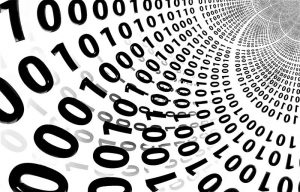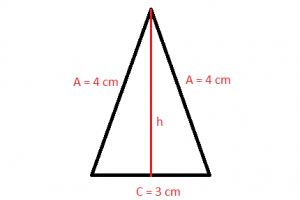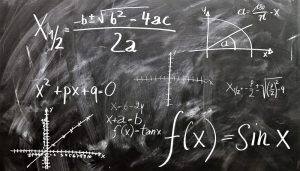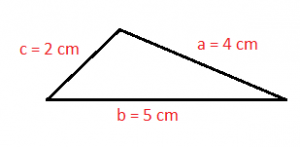Complex numbers
Complex numbers are those that form a group of digits that result from the addition made between a real number and an imaginary number. It is important to know that the real number is the number that can be expressed through a whole number, for example, 5, 28, 21; and the imaginary number is the number whose square is presented negatively. They are represented by two numbers placed in parentheses (x and y).

Related topics
Algebraic numbers, integers, irrational numbers, prime numbers, rational numbers, real numbers
What are complex numbers?
Complex numbers are entities of the branch of mathematics that are represented through a pair of real numbers, the first one that is called x and represents the real part, and the second one, called y, that represents the imaginary part.
Which are the complex numbers ?
They are numbers composed by all the extension of real numbers that conform the minimum algebraically closed body, this means that they are formed by all those numbers that can be expressed through the whole numbers. Real numbers also include all the numbers known as complex numbers, which include all the polynomial roots.
What are complex numbers for?
Real numbers are incapable of encompassing all the roots of the set of negative numbers, a characteristic that can be performed by complex numbers. This particularity allows complex numbers to be used in different fields of mathematics, engineering and mathematical physics. This is because they have the ability to represent electric current and different electromagnetic waves. They are widely used in electronics and also in telecommunications.
They are used for different algebraic works, in pure mathematics, in the solution of differential equations, in the branch of aerodynamics, hydrodynamics and in electromagnetism. They are essential in quantum mechanics.
Characteristics
Among the main characteristics that complex numbers have; we can mention the following:
- In mathematics they constitute a body.
- They are considered as points in the complex plane.
- It contains real numbers and imaginary
- The imaginary unity of complex numbers is recognized by the letter i.
- The first component is represented by the letter a, and belongs to the real part, the second component is represented by the letter b, and corresponds to the imaginary part.
- They are not able to maintain an order like real numbers.
History
The first notion of people trying to use imaginary numbers, dates back to the first century. The first scholar who made the first concepts of complex numbers was Heron of Alexandria, and he started facing the difficulties that arose when he tried to build a pyramid.
Once negative numbers were “invented,” mathematicians tried to find a number that, squared, could be equal to a negative one. Not finding an answer, they gave up. In the year 1500, speculations were again made about the square roots of negative numbers.
Formulas for solving polynomial equations of 3° and 4° degree were discovered at that time, and it was concluded that some work with square roots of negative numbers would be required. In 1545, the first great work with imaginary numbers was produced. Descartes, an important philosopher, mathematician and physicist, was the one who created the term imaginary number in the XVII silo and many years later, the concept of complex number would be formed.
How complex numbers are represented?
Complex numbers can be represented in the complex plane. The real part of the complex is represented in the abscissa axis and the imaginary part must be placed in the ordinate axis. In the complex plane, each complex number z = a + bi is assigned the coordinate point P (a, b), which is called the affix of the complex number. Any complex number can be represented as a vector OP, being O the origin of coordinates and P the affix of the complex.
Properties
The complete numbers have different properties, which are detailed below.
Transitive property
If z1=z2 and z2=z3 then z1=z3
Properties of the sum
The sum of two complex numbers z1=a + bi and z2=c + di is defined as
(a + bi) + (c + di) = (a + c) + (b + d) i
Among the properties of the sum we have the following:
- Lock property for the sum: For z1, z2 ∈ C you have to z1+z2∈C
- Commutative property: For any z1, z2 ∈ C it is fulfilled that: z1+z2=z2+z1
- Associative ownership: For any z1, z2, z3∈C it is met that: (z1+z2) + z3=z1+(z2+z3)
- Existence of the neutral element for the sum: 0 + 0i, abbreviated by 0, is the neutral element for the sum.
- Existence of the additive or opposite inverse: Every complex number z has a single additive inverse, denoted by -z.
Multiplication properties
The product of two complex numbers z1= a + bi and z2= c + di is defined as
(a + bi)⋅(c + di)=(ab – bd)+(ad + bc) i
Among the properties of multiplication we have the following:
- Lock property or multiplication lock: For z1, z2∈C you have to z1⋅ z2 ∈ C
- Commutative property: For any z1, z2 ∈ C it is fulfilled that: z1⋅z2=z2⋅z1
- Associative ownership: For any z1, z2, z3∈C it is met that: (z1⋅z2) ⋅z3=z1⋅(z2⋅z3)
- Existence of neutral element for multiplication: 1 + 0i, abbreviated by 1, is the neutral element for multiplication.
- Existence of multiplicative or reciprocal inverse: Every complex number z, other than 0, has a single multiplicative inverse, denoted by z-1.
- Distributive property: For any z1, z2, z3∈C it is fulfilled that: z1⋅(z2+z3) = z1⋅z2+z1⋅
Operations
The operations that can be performed using complex numbers are as follows:
- Add complex numbers.
- Subtract complex numbers.
- Multiply complex numbers.
- Finding conjugates of complex numbers
- Split complex numbers.
Examples
Addition:
(-3 + 3i) + (7 – 2i) = 4 + i
Subtraction
(5 + 3i) – (3 – i) = 2 + 4i
How to cite this article?
Briceño V., Gabriela. (2019). Complex numbers. Recovered on 24 February, 2024, de Euston96: https://www.euston96.com/en/complex-numbers/









